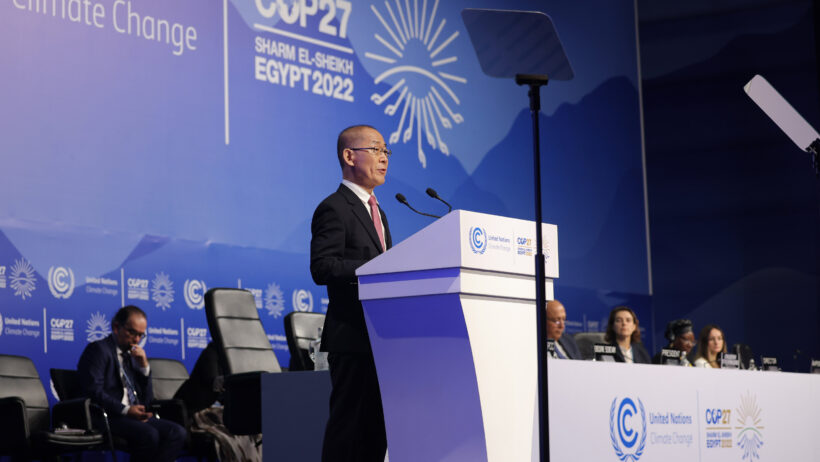As the specter of global warming looms larger with each passing year, the prospect of its devastating impact on humanity has sparked significant alarm and debate. The question arises: could a billion people die from global warming by 2030? To assess this dire possibility, it is critical to unravel the intricate web of environmental, social, and economic factors that contribute to climate change and its catastrophic consequences.
Global warming, primarily driven by anthropogenic greenhouse gas emissions, represents an existential threat to our planet. The escalation of carbon dioxide, methane, and nitrous oxide in the atmosphere has engendered a gradual yet alarming increase in global temperatures. Recent scientific projections indicate that without drastic measures, the planet could breach a critical threshold of 1.5 degrees Celsius above pre-industrial levels within the next decade. This temperature rise is pivotal; at this juncture, the consequences for human civilization could be catastrophic.
The potential for mass fatalities due to climate change can be attributed to a confluence of factors: extreme weather events, food scarcity, water shortages, disease proliferation, and socioeconomic instability. As global temperatures escalate, the frequency and severity of climate-related disasters are projected to intensify significantly. Hurricanes, wildfires, heatwaves, and floods could wreak havoc on vulnerable communities, resulting in untold loss of life and necessitating refugee crises on an unprecedented scale.
Moreover, the agricultural sector faces tremendous challenges from the changing climate. Crops are susceptible to heat stress, diminished water supply, and new pests or diseases that thrive in warmer conditions. The Food and Agriculture Organization has warned that declining yields could lead to food shortages, triggering famine-like conditions. Regions with already fragile food systems are particularly at risk; here, the specter of starvation could loom large, with the U.N. estimating that millions might perish from hunger as a direct consequence of climate-induced agricultural collapse.
Water scarcity, a looming crisis, also has profound implications for human survival. As glaciers melt and rivers dry, millions could find themselves without sufficient access to safe drinking water. This scarcity is not merely a matter of inconvenience; it poses significant hazards to human health, giving rise to dehydration and the spread of waterborne diseases. Already, communities in arid regions are grappling with the repercussions of dwindling water sources. The compounding of these factors can escalate mortality rates dramatically.
In addition to direct health impacts, climate change is anticipated to amplify the spread of infectious diseases. Vector-borne diseases, such as malaria and dengue fever, could migrate to new regions as warmer climates become hospitable to the mosquitos that carry them. The public health response to these burgeoning threats will be paramount; however, if unprepared, health systems could become overwhelmed, further exacerbating mortality rates.
Furthermore, socio-economic instability can contribute significantly to mortality connected to global warming. Economies already teetering on the brink could face collapse due to the economic repercussions of climate change. Loss of livelihoods from agricultural failures, increased healthcare costs, and the destruction of infrastructure due to extreme weather could plunge millions into poverty, making them more susceptible to health crises and mortality. A destabilized society may struggle to provide basic services, accelerating the cycle of death and despair.
While the pessimistic scenarios are dire, they invite a reconsideration of our current trajectory and the feasible solutions we can implement. It is essential to approach this looming crisis with urgency yet also with hope and determination. Transitioning to renewable energy sources, enforcing stringent emissions regulations, and implementing sustainable agricultural practices are pivotal steps in combating climate change. Moreover, fostering global cooperation could bolster resilience against these multifaceted challenges, particularly for the most vulnerable populations.
Investment in climate adaptation and mitigation strategies can span technological innovation and community-driven initiatives, providing a framework for survival amidst existential threats. For instance, reforestation projects not only sequester carbon but also restore biodiversity and stabilize fragile ecosystems, thereby promoting resilience in the face of climate-related disruptions. Likewise, advances in agricultural technology could enhance crop resilience, allowing us to feed a growing population while also reducing our carbon footprint.
Education and awareness play an equally critical role. By cultivating a society informed about climate issues, we empower individuals to participate in environmental advocacy and foster grassroots movements that push for policy change. Every voice matters, and collective action can instigate monumental shifts in public policy and corporate accountability.
In summary, while the specter of a billion deaths due to global warming by 2030 remains a chilling possibility, it serves to reinforce the urgency of immediate and concerted action. The pathways leading toward such a catastrophic future can be altered, provided we take responsibility for our environmental impact. By embracing sustainability, implementing innovative solutions, and fostering community resilience, humanity can shift perspectives, transforming fear into a clarion call for action. The fate of our planet and our people hangs in the balance, and the time for decisive action is now.







